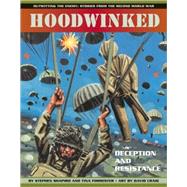
Stephen Shapiro is a lifelong aficionado of military history, and a recipient of the Canadian War Museum History Award.
Tina Forrester is a researcher and writer on a broad spectrum of subjects. Her previous works include Ultra Hush-Hush, and The Birthday Book.
Illustrator David Craig is highly skilled at depicting historical events and people. His previous works include the dramatic illustrations in the children's books Attack on Pearl Harbor and First to Fly: How Wilbur and Orville Wright Invented the Airplane. The latter title won the 2003 James Madison Book Award.
|
4 | (2) | |||
| Introduction | 6 | (3) | |||
|
9 | (48) | |||
|
10 | (5) | |||
|
15 | (3) | |||
|
18 | (5) | |||
|
23 | (6) | |||
|
29 | (4) | |||
|
33 | (5) | |||
|
38 | (3) | |||
|
41 | (4) | |||
|
45 | (4) | |||
|
49 | (4) | |||
|
53 | (4) | |||
|
57 | (36) | |||
|
59 | (3) | |||
|
62 | (4) | |||
|
66 | (5) | |||
|
71 | (4) | |||
|
75 | (6) | |||
|
81 | (4) | |||
|
85 | (4) | |||
|
89 | (4) | |||
| Photo credits | 93 | (1) | |||
| Glossary | 93 | (1) | |||
| Index | 94 | (2) | |||
| Acknowledgments | 96 | (1) | |||
| Biographies | 96 |
The New copy of this book will include any supplemental materials advertised. Please check the title of the book to determine if it should include any access cards, study guides, lab manuals, CDs, etc.
The Used, Rental and eBook copies of this book are not guaranteed to include any supplemental materials. Typically, only the book itself is included. This is true even if the title states it includes any access cards, study guides, lab manuals, CDs, etc.